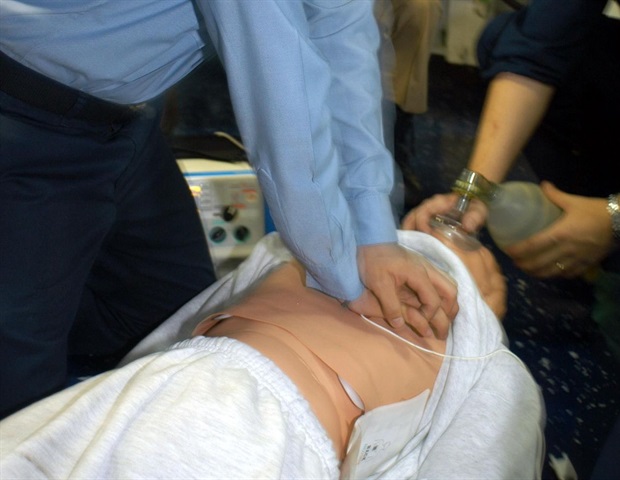In a recent review published in Nutrients, researchers reviewed existing scientific data on the effects of vitamin K (VK) on bone health and elucidated the underlying mechanisms.
 Study: The Potential of Vitamin K as a Regulatory Factor of Bone Metabolism—A Review. Image Credit: Tatjana Baibakova/Shutterstock.com
Study: The Potential of Vitamin K as a Regulatory Factor of Bone Metabolism—A Review. Image Credit: Tatjana Baibakova/Shutterstock.com
Background
Vitamin K, a fat-soluble vitamin, is required for blood clotting because it generates clotting components in the liver. In addition, VK has anti-oxidant and anti-inflammatory properties that prevent cardiovascular disease and cancer.
Furthermore, researchers are investigating the potential of VK as a novel bioactive molecule to promote bone health, with data pointing to its function in bone metabolism.
About the review
In the present review, researchers described vitamin K as an osteoprotective agent and the associated mechanisms of action.
Beneficial effects of vitamin K on bone health
Osteocalcin (OC) is a non-collagen protein in bone tissue, released by osteoblasts and odontoblasts, with chondrocytes producing a lower quantity. The active carboxylated form of osteocalcin has a higher affinity for free calcium ions and hydroxyapatite (HA) that suppress aberrant HA crystallization and cartilage mineralization speed while maintaining regular bone mineralization.
Studies indicate that serum undercarboxylated osteocalcin (ucOC0 levels may be more sensitive to vitamin K status and can be utilized to diagnose subclinical vitamin K insufficiency.
Dietary supplementation with 100 g MK-7 may enhance osteocalcin γ-carboxylation state, contribute to sustaining γ-carboxylation status, and promote bone health. Higher serum ucOC levels indicate vitamin K insufficiency and improve fracture risk.
In ovariectomized mice, adding MK-4 might improve bone health by lowering serum undercarboxylated osteocalcin levels. In vitro investigations revealed that osteocalcin may suppress early osteoclast development mediated by G protein-coupled receptor family C group 6 member A (GPRC6A). Lower serum undercarboxylated osteocalcin levels confirm the link between vitamin K consumption and bone health.
The unfavorable effect of osteocalcin on bone metabolism might be due to decarboxylation and subsequent osteocalcin-bound calcium ion release. Green vegetables, plants, rapeseed, olive, soybean, natto, pork, and cheese contain vitamin K.
Evidence indicates that the vitamin improves bone metabolism. The National Academy of Medicine in the United States recommends a sufficient intake of VK1 of 120 g/d for adult males and 90 g/d for adult women. However, research has indicated that VK’s needs for bone health may be greater than the DRV’s.
Natto consumption (including 20 g/pack VK1 and 380 g/pack VK2) was higher in participants with lower blood ucOC levels, higher bone mineral density (BMD), and a decreased risk of poor BMD in the hip and femoral neck.
Low vitamin D (VD) and VK concentrations are associated with an increased incidence of hip fractures in senior men and women. MK-7 supplementation (375 g/d) for a year reduced associated degeneration of trabecular bone in the tibia in postmenopausal women.
VK2 supplementation may lower blood undercarboxylated osteocalcin levels and increase BMD at the radius among individuals with cerebral palsy and osteoporosis. Lower blood vitamin D and VK1 levels were associated with an increased risk of hip fracture in aged men and women.
Dietary vitamin K intake may lower serum undercarboxylated osteocalcin and enhance BMD; however, additional research is needed to examine the combined impact of VK and other anti-osteoporosis medicines and the effect of VK in various clinical circumstances.
Mechanisms underlying vitamin K effects on bone
Studies indicate that vitamin K works directly on VKDPs such as osteocalcin and matrix Gla protein (MGP) to promote bone growth by increasing mineral deposition.
The protective effects of vitamin K can be mediated by regulating relevant transcription factors and proteins through different signaling pathways. MK-7 increases osteogenic differentiation by promoting osteoblast maturation.
Vitamin K2 stimulates the production of osteoblastic markers such as alanine phosphatase (ALP), osteoprotegerin (OPG), osteopontin (OPN), and MGP as a transcriptional regulator of bone-specific genes through the steroid and xenobiotic receptor (SXR).
MK-4 promotes growth differentiation factor 15 (GDF15) and stanniocalcin 2 (STC2) through activation of protein kinase A (PKA) and autophagy in MC3T3E1 cells to enhance osteogenic differentiation and mineralization.
It also induces osteogenic development in periodontal ligament stem cells (PDLSCs) through the Wnt/-catenin signaling pathway. By antagonizing osteoclasts, vitamin K can serve an osteoprotective effect.
Vitamin K2 inhibited osteoclastic resorption function by targeting osteoclasts for death and accelerated osteoblastogenesis in human bone marrow cells while regulating osteoclastogenesis through receptor activator of nuclear factor kappa B ligand (RANKL)/osteoclast differentiation factor (ODF) expression. Vitamin K supplementation improved high-fat-diet-induced bone loss in obese mice through osteoblast and osteoclast activity regulation.
In vivo studies have reported that MK-4 suppressed osteoclast development, lowered messenger ribonucleic acid (mRNA0 expression of nuclear factor of activated T cells c1 (NFATc1), osteoclast-associated receptor (OSCAR), and cathepsin K (CTSK), and slowed bone loss in ovariectomized mice.
The findings indicate that vitamin K pathway regulation enhances bone health by regulating the turnover of bone-forming osteoblasts and bone-resorbing osteoclasts.
Conclusions
Based on the review findings, VK, a natural compound essential for bone health, is being explored as a potential dietary supplement and drug candidate.
The study findings indicate the need for further research on vitamin K absorption, safety, and osteoprotective effects when combined with other anti-osteoporosis drugs.
The review findings could help develop dietary supplement guidelines and identify potential therapeutic targets. Validation of VK absorption databases and clinical trials is also required.






